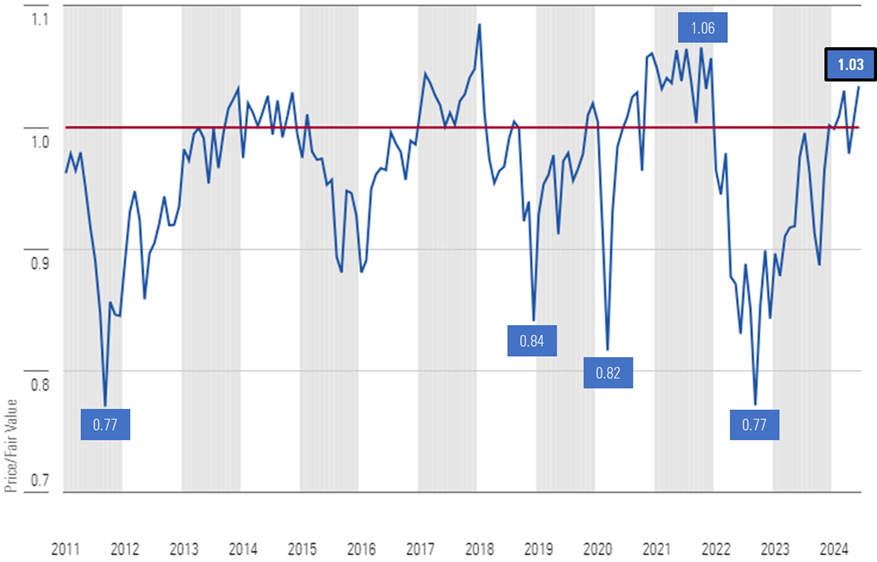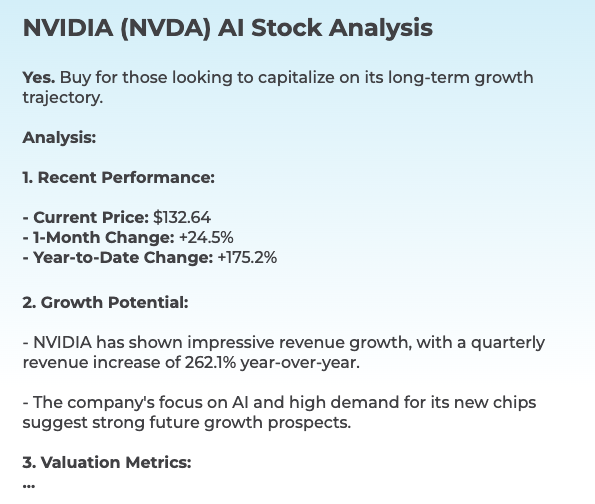20 Handy News For Picking AI Stock Predictions Platform Websites
20 Handy News For Picking AI Stock Predictions Platform Websites
Blog Article
Top 10 Tips For Assessing The Data Quality And Source Of Ai Platform For Predicting And Analyzing Stocks
Examining the quality of data and sources that are used by AI-driven stock prediction as well as trading platforms is critical for ensuring reliable and accurate information. A poor quality of data could cause inaccurate predictions, financial losses and mistrust on the platform. Here are 10 best tips to evaluate data quality and its source:
1. Verify the data sources
Verify the source of data. Verify that the platform is using trusted and reliable providers of data, like Bloomberg, Reuters or Morningstar.
Transparency - The platform should be open about the sources of its data, and regularly update them.
Avoid relying on a single platform: trustworthy platforms frequently combine data from different sources to lessen bias.
2. Examine the freshness of data
Real-time vs. Delayed Data: Find out whether the platform provides real-time information or delayed information. Real-time trading requires real-time data. Delayed data will suffice in long-term analysis.
Check the frequency of updating data (e.g. hourly, minute by minute or daily).
Historical data consistency: Make sure that historical data is free of gaps or anomalies.
3. Evaluate Data Completeness
Check for missing or inaccurate data.
Coverage: Ensure the platform has a wide selection of markets, stocks as well as indices and equity markets that are pertinent to the strategies you use for trading.
Corporate actions: Make sure that your platform allows stock splits and dividends along with mergers and other corporate actions.
4. Test Data Accuracy
Cross-verify your information: Verify the data on your platform against other trusted sources.
Error detection: Check for outliers, erroneous prices, or mismatched financial metrics.
Backtesting: You can utilize historical data to test strategies for trading. Check if they match your expectations.
5. Examine the Data Granularity
Level of detail - Make sure you can find the most precise information, such as intraday volumes, prices, bid/ask spreads, and order books.
Financial metrics: Make sure that the platform offers detailed financial statements, including statements of income, balance sheets and cash flow and also important ratios (such as P/E, ROE, and P/B. ).
6. Verify that the Data is Clean and Preprocessing
Normalization of data is essential for ensuring consistency.
Outlier handling Verify how your system handles anomalies or data that is outliers.
Incorrect data: Determine whether the platform is using effective techniques to fill in gaps data points.
7. Assess the consistency of data
Make sure that all data is aligned to the same timezone. This will eliminate any discrepancies.
Format consistency: Ensure your data is presented in a consistent manner.
Cross-market consistency: Ensure that data from different markets or exchanges is harmonized.
8. Evaluate the Relevance of Data
Relevance to the trading strategy Ensure the data aligns with your style of trading (e.g., technical analysis, quantitative modeling, fundamental analysis).
Features Selection: Find out whether the platform has pertinent features, like sentiment analysis, economic indicators and news information that will enhance forecasts.
Review Data Security Integrity
Data encryption: Make sure that the platform utilizes encryption to safeguard data while it is stored and transmitted.
Tamper proofing: Verify the information on the platform isn't being altered.
Compliance: Check to see whether the platform is in compliance with laws regarding data protection.
10. Transparency of the AI model's transparency on the Platform could be verified
Explainability. You must understand how the AI makes use of data to come up with predictions.
Bias detection - Examine to determine if your system actively monitors models and data for biases.
Performance metrics: To determine the accuracy and reliability of predictions, evaluate the performance metrics of the platform (e.g. precision, accuracy, recall).
Bonus Tips:
User feedback and reviews: Use reviews and user feedback to determine the reliability of a platform and its data quality.
Trial period: Try the platform free of charge to test the functionality and the features available before committing.
Support for customers: Make sure the platform has a solid customer support to resolve issues related to data.
Utilize these suggestions to determine the source of information and quality of AI platform for stock predictions. Make educated decisions regarding trading by using this information. Take a look at the top more info on ai trading tools for site info including ai investment platform, best ai for trading, ai for stock predictions, ai investment platform, ai chart analysis, market ai, best ai for trading, ai stock trading app, trading ai, best ai for trading and more.
Top 10 Tips To Evaluate The Effectiveness Of Ai Analysis And Stock Prediction Platforms
Scalability is a key factor in determining whether AI-driven platforms for stock forecasting and trading can cope with the increasing demand of users, data volumes and market complexity. These are the top 10 ways to determine the capacity of these platforms.
1. Evaluate Data Handling Capacity
Tips : Find out whether the platform has the ability to process and analyze large data sets.
What is the reason? Scalable platforms should be able to handle increasing data volumes with no performance loss.
2. Test Real Time Processing Capabilities
Find out how the platform handles real-time data streams such as news and stock prices.
Why trading decisions are taken in real-time, and delays could lead traders to miss out on opportunities.
3. Check for Cloud Infrastructure and Elasticity
Tips. Find out if the platform utilizes cloud-based infrastructure, such as AWS, Google Cloud and Azure, which can scale resources on demand.
Why? Cloud platforms are elastic, and are able to be scaled up or down according to requirements.
4. Algorithm Efficiency
Tips: Examine the computational efficacy of AI models (e.g., deep learning or reinforcement learning, etc.)) employed to predict.
The reason: Complex algorithms are resource-intensive. Optimising them is essential to scale them.
5. Examine Distributed and Parallel Computing
TIP: Find out if the platform leverages distributed computing or parallel processing frameworks (e.g., Apache Spark, Hadoop).
What are they: These technologies facilitate more efficient data processing and analysis across a variety of nodes.
Review API Integration and Interoperability
Tips: Make sure to check the integration of the platform with external APIs.
What's the reason? Seamless integration enables the platform to be adapted to changing trading environments and data sources.
7. Analyze User Load Handling
To test the performance of your platform, simulate high-volume traffic.
The reason: The performance of a platform that is scalable should not be affected by the rise in users.
8. Assess the effectiveness of the model's retraining and adaptability
Tips: Examine how often and efficiently AI models are retrained by new data.
The reason is that markets change and models must adapt quickly to keep their the accuracy.
9. Check for Fault-Tolerance and Redundancy
Tips: Make sure that the platform includes failover mechanisms and redundancy in case of software or hardware failures.
Why: Downtime can be expensive in trading, which is why fault tolerance is essential for scaling.
10. Monitor Cost Efficiency
Tip: Evaluate the cost of scaling the platform, including cloud resources, storage for data, and computational power.
What is the reason? Scalability must come at a cost that is affordable. This means balancing performance against expense.
Bonus tip: Future-proofing
Make sure the platform can be able to adapt to changes in regulation and incorporates emerging technologies like quantum computing, or even advanced NLP.
These factors can assist you in assessing the impact of AI-based stock prediction and trading platforms. They'll also make sure they're reliable efficient, reliable capable of expansion and future-proof. See the recommended his explanation for website examples including ai stock investing, ai stock investing, stocks ai, how to use ai for stock trading, best ai trading platform, how to use ai for copyright trading, ai investment tools, chart ai trading, best ai stocks to buy now, free ai tool for stock market india and more.